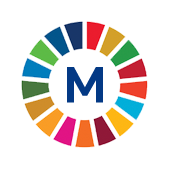 6.2.1b Proportion of population with hand washing facility with soap and water available at homeMetadataPeriod: AnnualYear: 2025 |
 6.2.1b Proportion of population with hand washing facility with soap and water available at homeMetadataPeriod: AnnualYear: 2025 |
| METADATA |
| Indicator information |
| Definition and methodology |
| Data source type and data collection method |
| Notes |
| ID of global indicator |
| Metadata update |
| Global metadata |
| Indicator information | Top |
| Indicator | |
6.2.1b Proportion of population with hand washing facility with soap and water available at home | |
| Global indicator name | |
6.2.1 Proportion of population using (a) safely managed sanitation services and (b) a hand-washing facility with soap and water | |
| Target | |
6.2 By 2030, achieve access to adequate and equitable sanitation and hygiene for all and end open defecation, paying special attention to the needs of women and girls and those in vulnerable situations | |
| Goal | |
Goal 6. Ensure availability and sustainable management of water and sanitation for all | |
| Definition and methodology | Top |
| Definition | |
The proportion of the population with basic hygiene services is defined as the proportion of population with a handwashing facility with soap and water available at home.
Handwashing facilities may be located within the dwelling, yard or plot. They may be fixed or mobile and include a sink with tap water, buckets with taps, tippy-taps, and jugs or basins designated for handwashing. Soap includes bar soap, liquid soap, powder detergent, and soapy water but does not include ash, soil, sand or other handwashing agents. | |
| Methodological explanations | |
The data sources included in the JMP database are:
| |
| Method of calculation | |
The production of estimates follows a consistent series of steps, which are explained in this and following sections (see link below):
1. Identification of appropriate national datasets
http://unstats.un.org/sdgs/metadata/files/Metadata-06-02-01b.pdf
| |
| Unit of measure | |
% | |
| Available disaggregation | |
Type of settlements | |
| Territorial level | |
Republic of Serbia | |
| Data source type and data collection method | Top |
| Data source | |
The WHO/UNICEF Joint Monitoring Programme for Water Supply, Sanitation and Hygiene (JMP), Institut for Public health Milan Jovanović Batut and Statistical Office of the Republic of Serbia | |
| Periodicity of data collection | |
Annual | |
| Notes | Top |
| ID of global indicator | Top |
C060201 | |
| Metadata update | Top |
| 5/6/2025 | |
| Global metadata | Top |
https://unstats.un.org/sdgs/metadata/files/Metadata-06-02-01b.pdf
| |